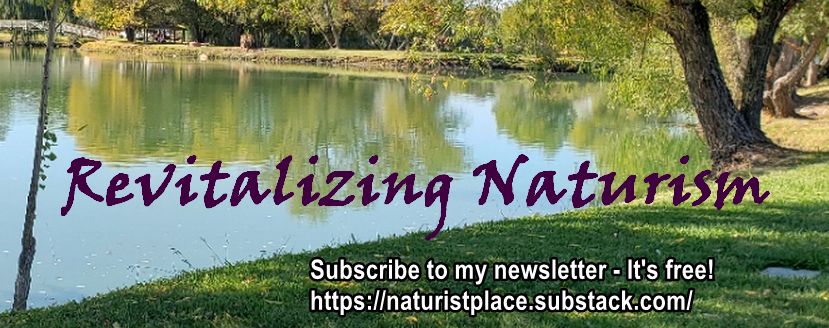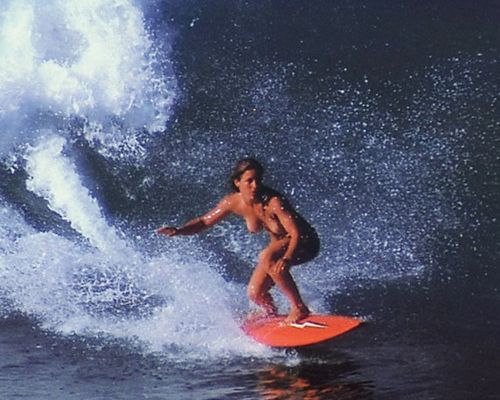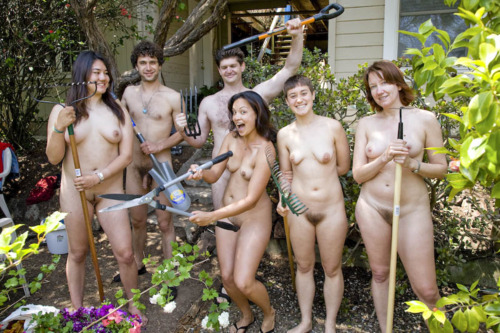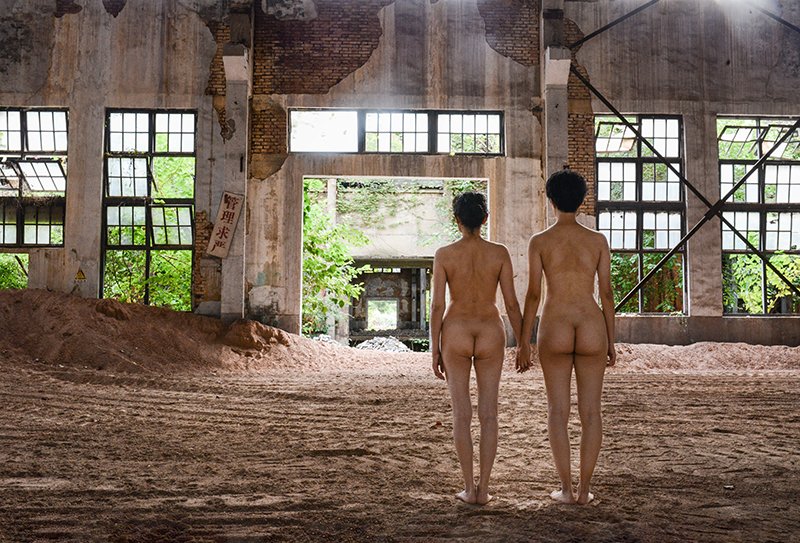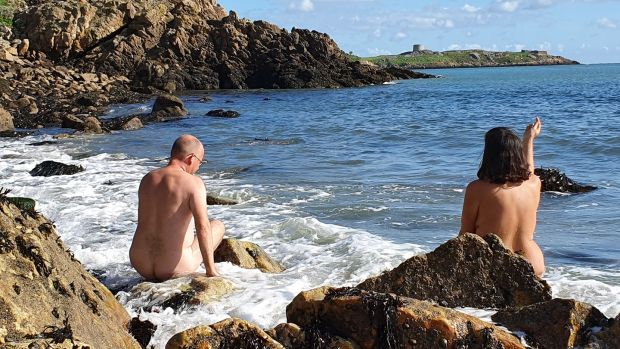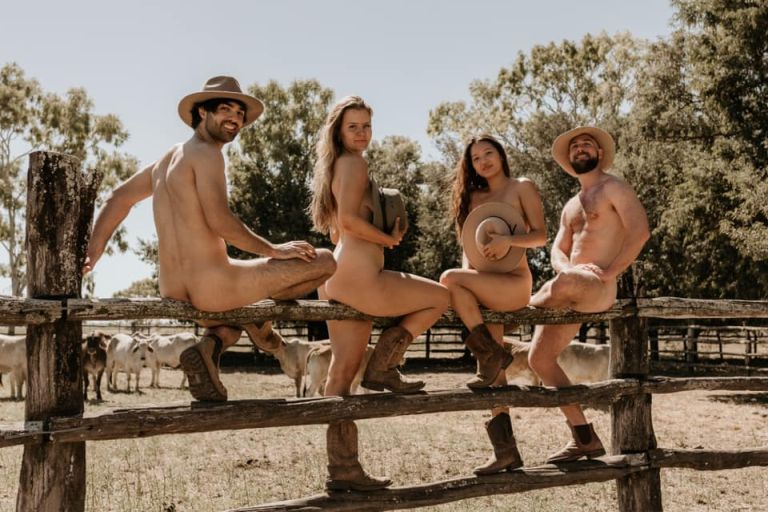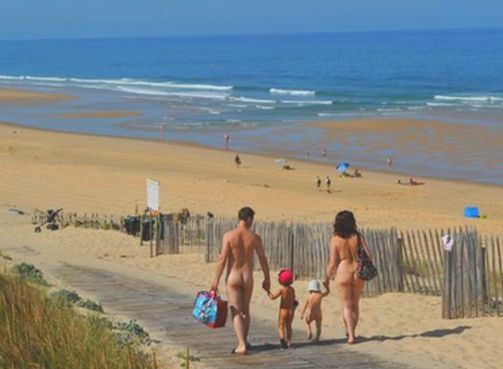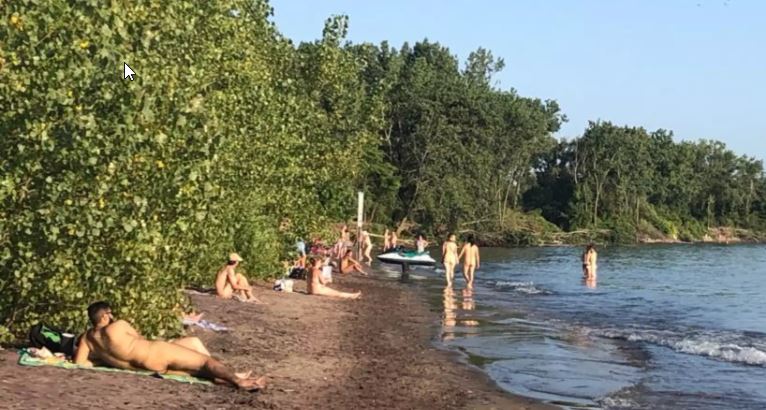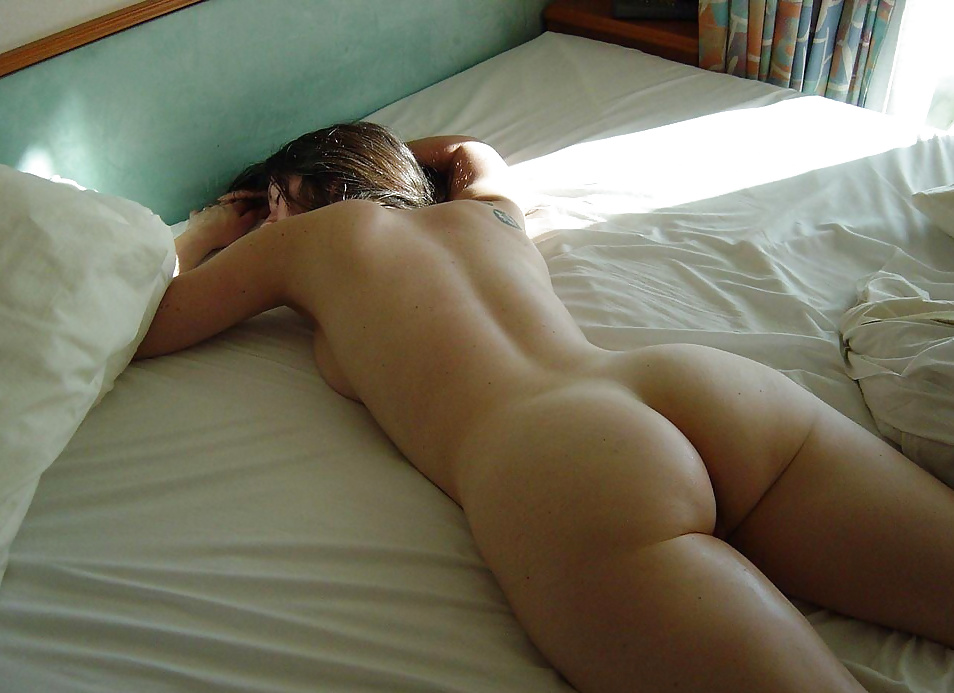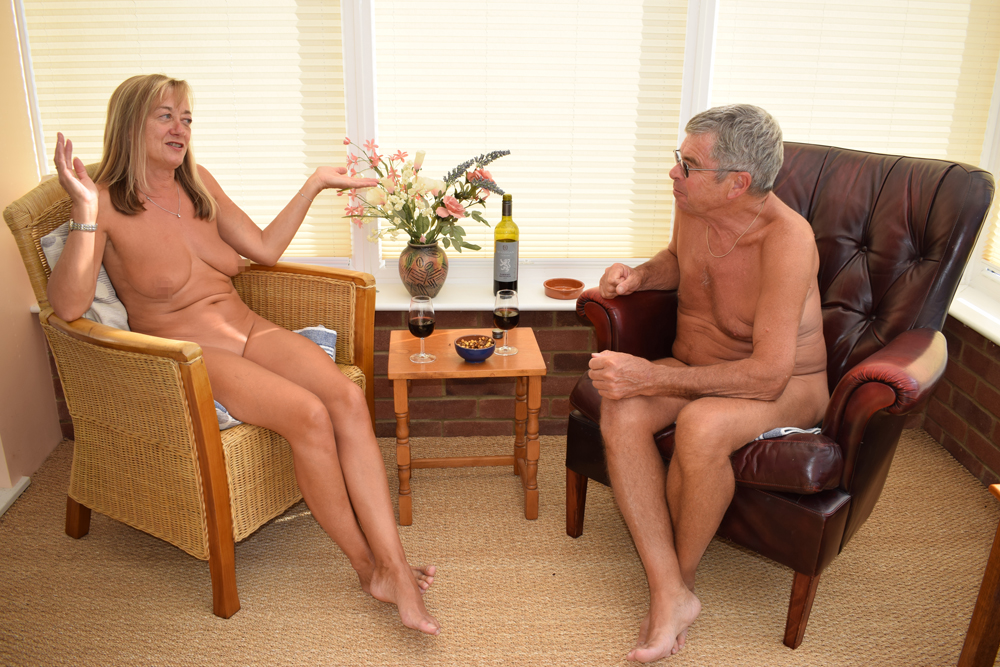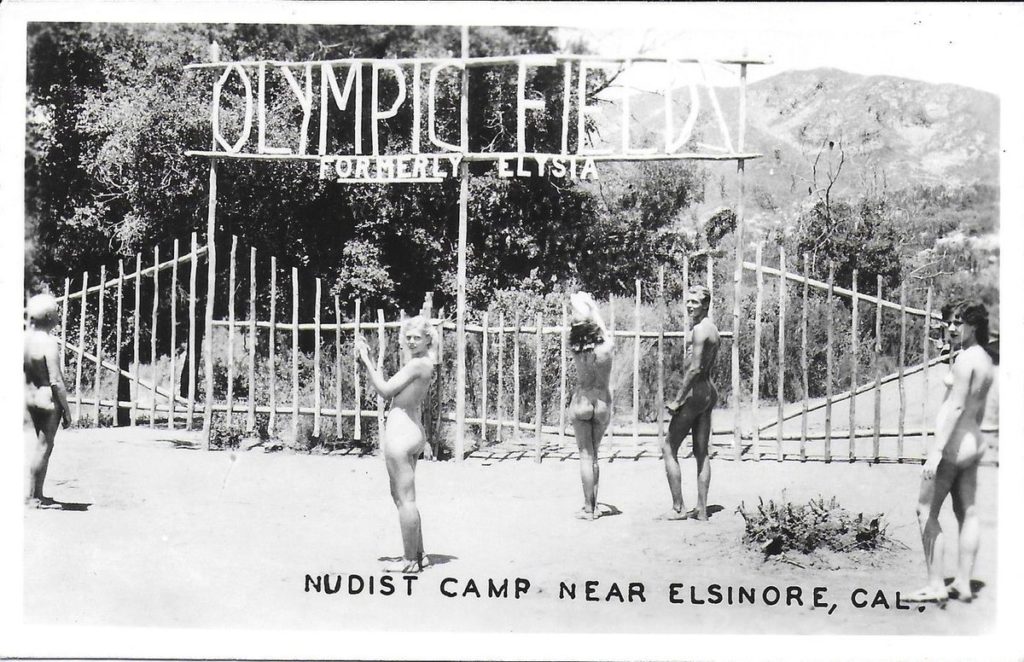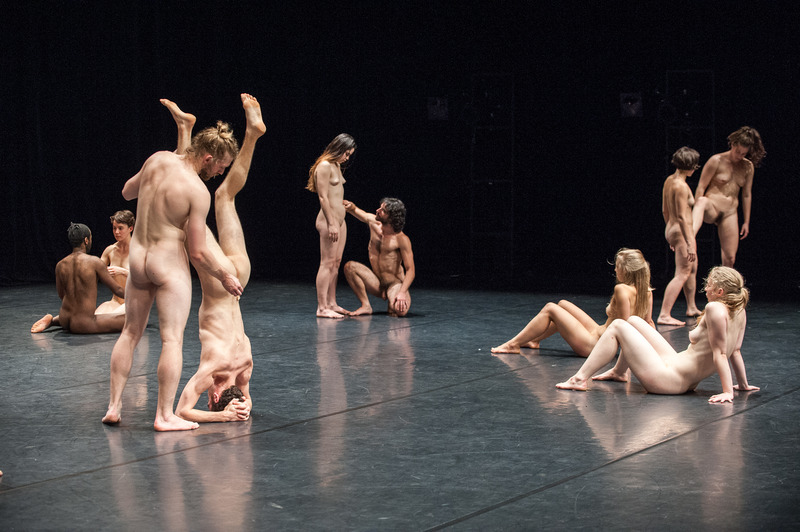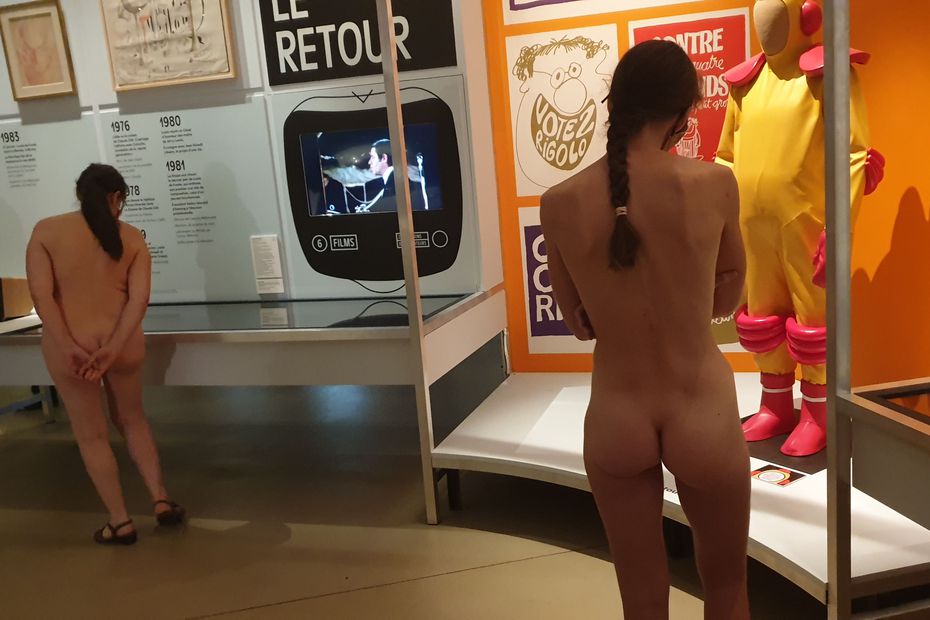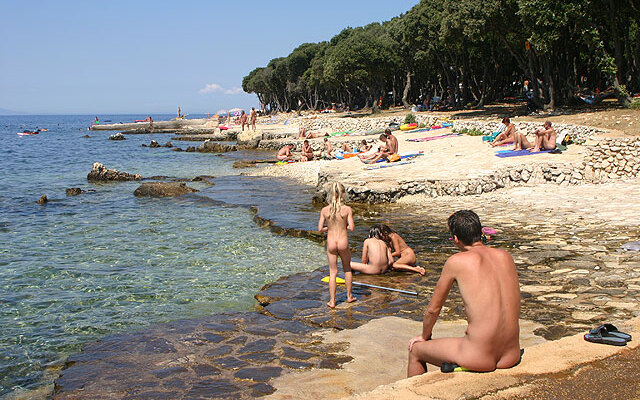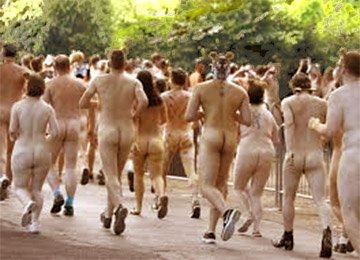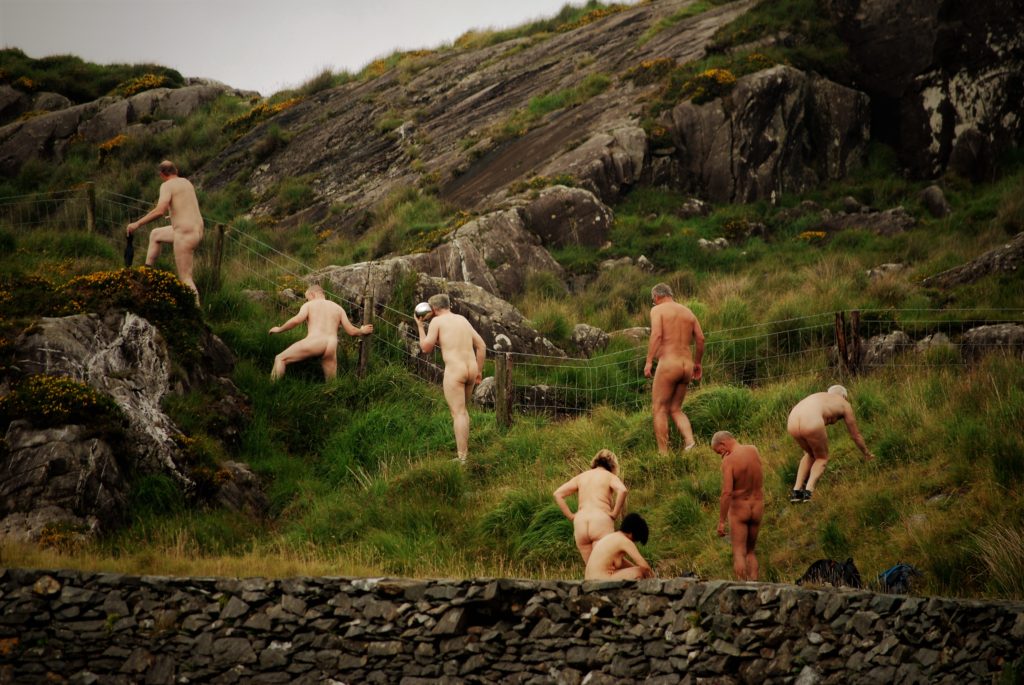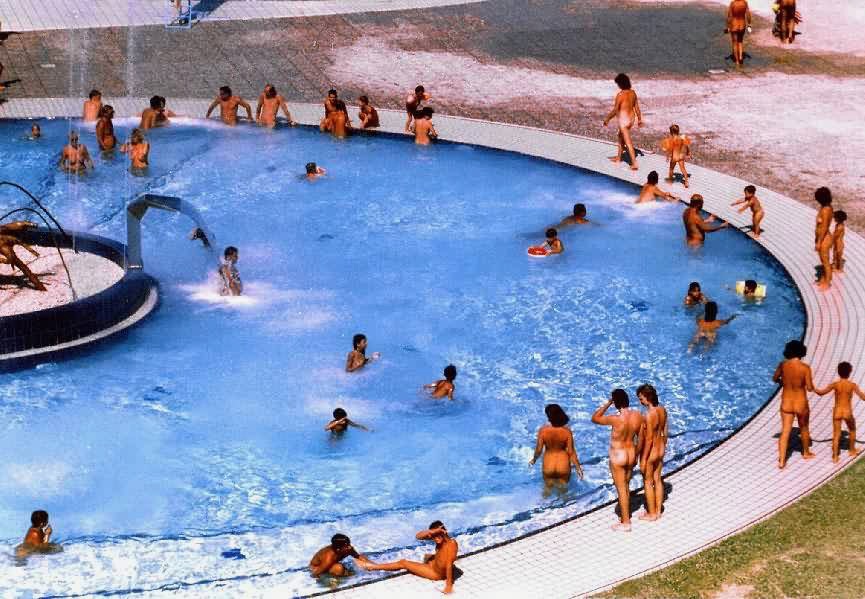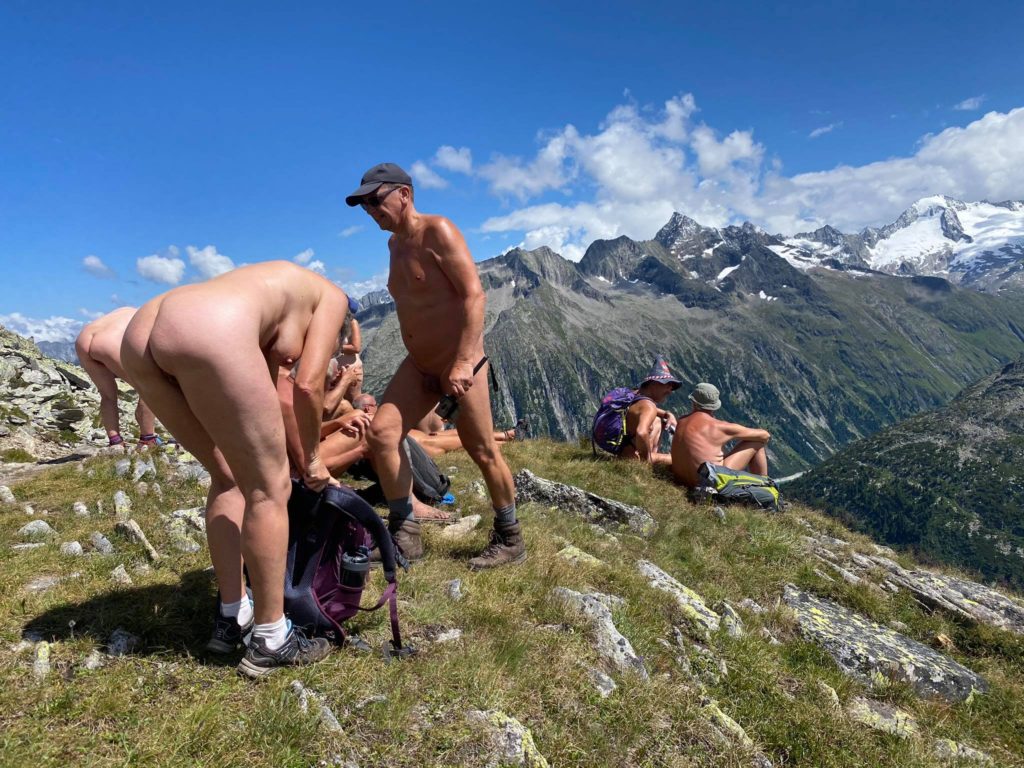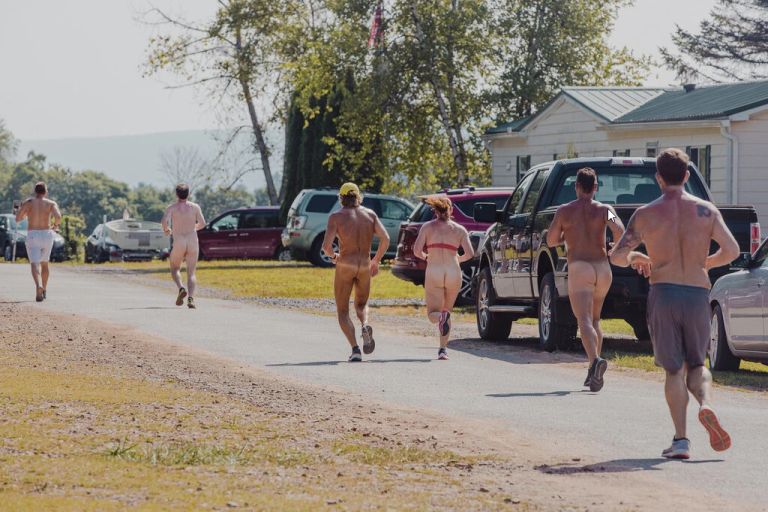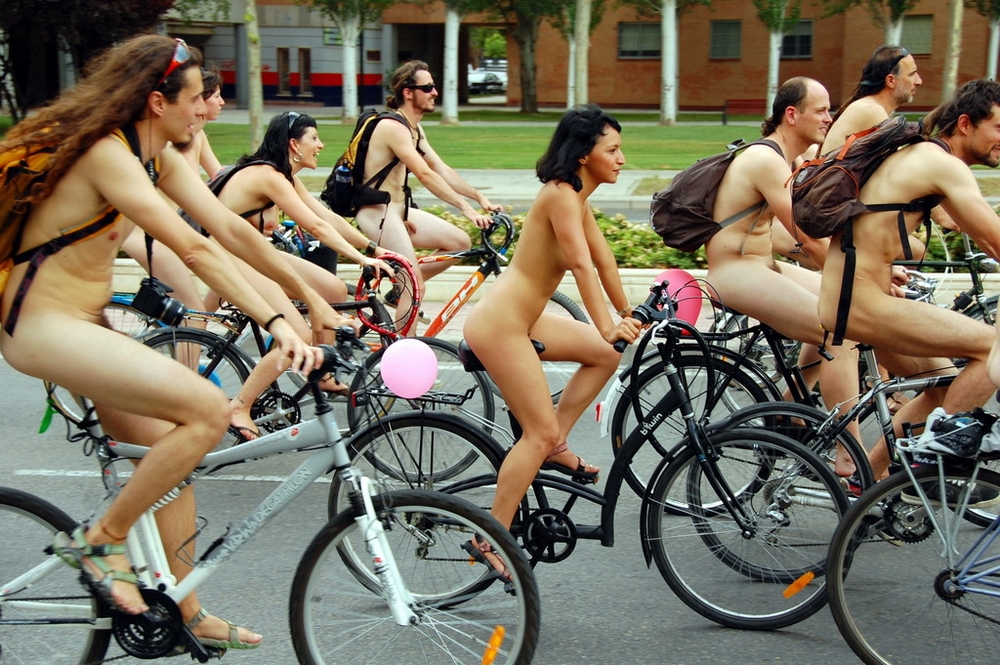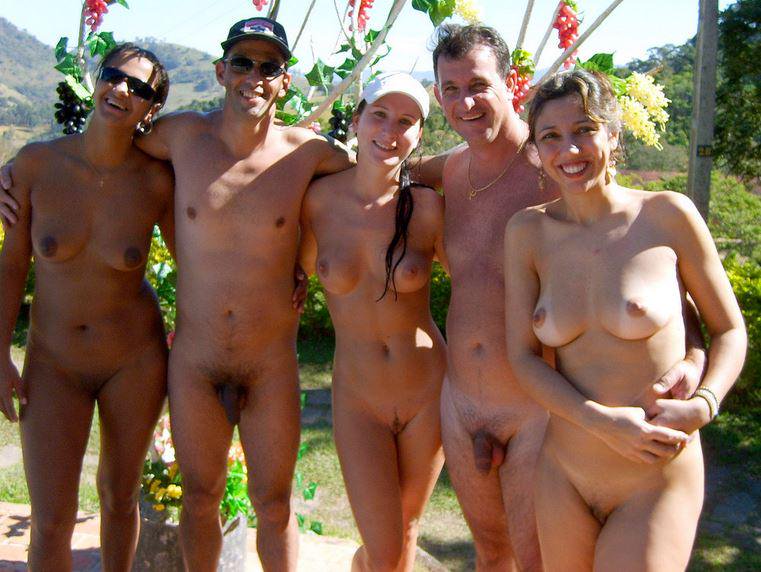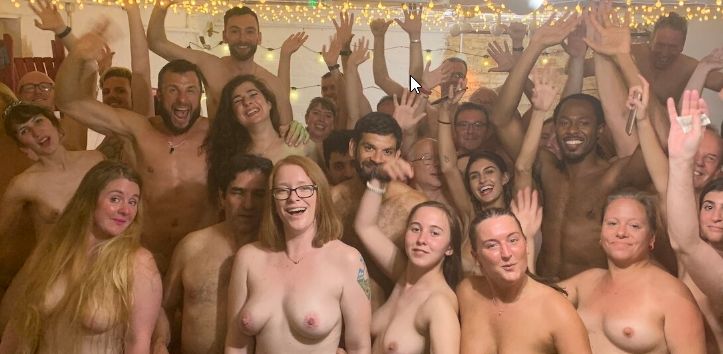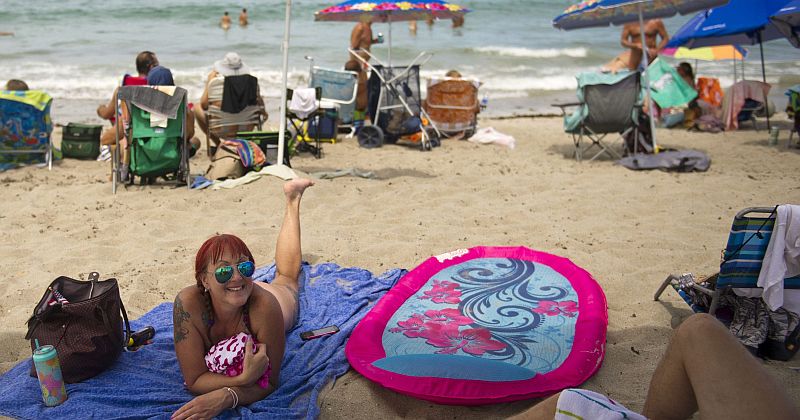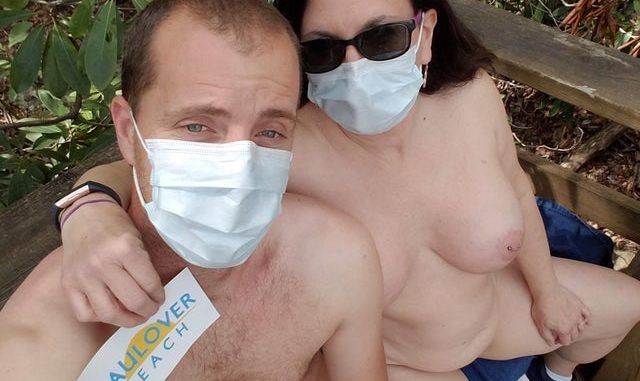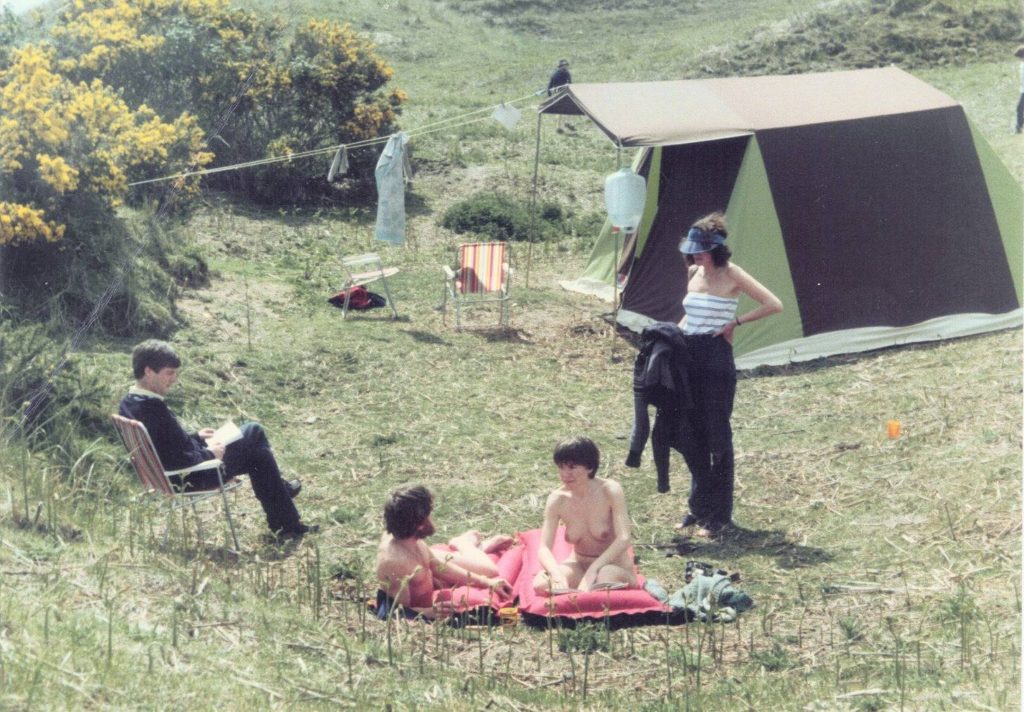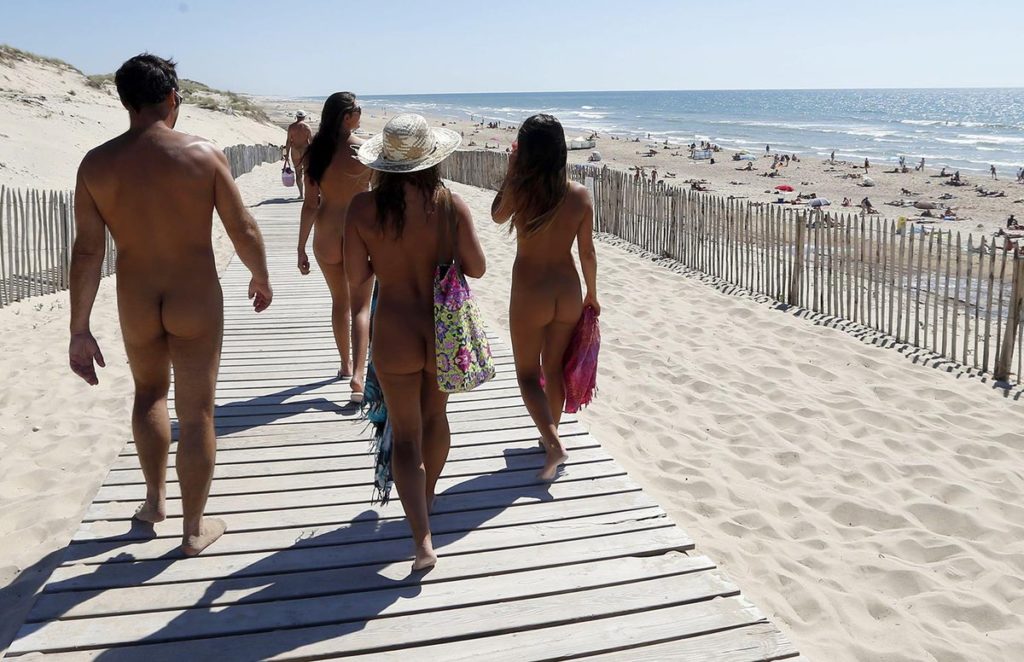
- Naturist travel and vacations
The website TravelAwaits seems to offer good information on a popular topic: travel and vacations. One nice feature is that it deals separately with a number of different types of travel, such as weekend getaways, family vacations, cruises, RVing and camping, budget travel, and a few others. Rather unusually for a travel website for the general public, naturist travel is also one of the types covered.Although December is not exactly the best month for naturist travel in the northern hemisphere, there are 3 articles offered in that month:
- 8 Best European Nude Beaches
Lists of “best” clothing-optional beaches are common, of course. But this list is a good one. As the article says, “You’ve got to hand it to the Europeans. When it comes to vacationing, they know how to do it properly. They don’t think twice about taking off for three weeks in the summer, nor leaving their clothes behind with their laptops.” Three of the beaches are in France, which has long been a top naturist destination, as explained here. The article’s first choice is Montalivet, for good reasons. (It’s the beach pictured above.) - The Ultimate Naturist Vacation Packing List: Things You Must Bring And What To Leave Behind
Frequent travelers know pretty well what they need to bring with them. But there are a few additions (and deletions) to consider for a naturist vacation. You will need just a few clothes (at least for getting to the location), as few as possible. Depending on exactly what type of vacation you’re considering – camping, nude resort, or cruise – there may be some additional things to include. - 6 Reasons Nude Vacations Are Becoming More Popular
If you’re an experienced naturist you know how good being naked feels (when done in a nudity-friendly environment). And lots of fun activities are even more fun without clothes. Once you’ve discovered this, you’ll know why nude vacations are becoming more popular.
Previous articles on that site were: 8 Top Naturist Resorts In France and Everything You Wanted To Know About Being A Naturist But Were Afraid To Ask - 8 Best European Nude Beaches
- Growing up with nudists
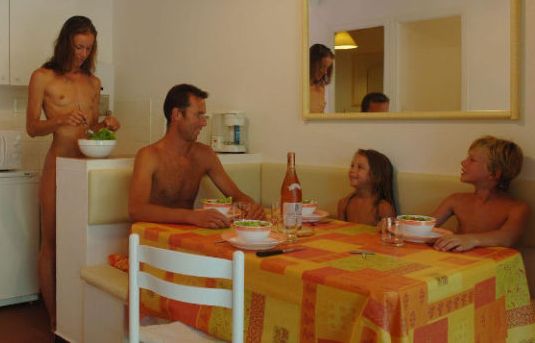
If you haven’t experienced being a child in a family in which it was normal, or at least not unusual, to wear nothing, you may well be envious of anyone who’s had that good fortune. Here’s an article from someone who had that experience – in a naturist camp, no less – until he was an adult. He kept a cottage there, which he used off and on for 30 years after he left.Michael Ruehle writes about the 25-acre naturist camp in Canada, where he spent his childhood living with his family. The camp, Sun Valley Gardens, has been closed for the last 15 years. At its peak in the 1960s and 70s, “there were about 500 adult members, and it was one of the largest nudist clubs in North America, with members coming from as far as Toronto, Montreal, Boston, and Cleveland,” according to Michael. This was in spite of its relatively small physical size.
The camp was started around 1956 by his father, Karl, who had immigrated from Germany. He had been inspired by naturism in his own youth and wanted to continue after moving to Canada. Unlike many naturists in the 1950s (and even up to now), Karl was not secretive about naturism. He occasionally invited neighbors, local politicians, and news media to visit. As a result, “instead of being harassed, the place was quite quickly accepted by the authorities.”
Michael goes on to write a lot more about the camp during the time it was most successful, but he says only a little about his own childhood experiences, except to note that
“We never concealed where we lived, so it was the subject of a lot of curiosity among the other kids. But most of my friends, male or female, were permitted to come visit me — another benefit of the “open house” policy, because their parents had presumably visited. I had another large group of friends at Sun Valley Gardens as well, who would be there either on weekends or for two or three weeks at a time, and I would see them every summer.”Related information:
- Nudists bare all for journalist June Callwood
An actual 13-minute video from a 1961 TV interview of Michael’s parents. - SLIDESHOW SPECIAL | Naturism in Niagara
A set of 40 slides, some in restored color, of historical views of Sun Valley Gardens in the early years. (The property has not been maintained and is now decrepit, as some recent pictures show.) There’s also a long recent article on the camp’s history.
- Nudists bare all for journalist June Callwood
- Local Opportunities for Naturism
Rye is a town in the southeast of England, about 75 miles and slightly less than 2 hours from London. It’s on the coast and has a population of about 9000. The article here appeared in the local newspaper and could easily serve as a glowing advertisement for naturism. For example, here’s how it describes the activities of the local naturist group:
“East Sussex Naturists is a loose social group of naturists who, until 2020 closed most things down, were arranging visits to local art galleries, pub meals, yoga classes, regular weekly swims at local facilities, countryside walks and cycle rides in Kent and Sussex, ten-pin bowling and more – yes, and all without wearing clothes!”Right there you have a variety of activities whose extent far surpasses that of most local groups in the U. S. – of which there are actually rather few anyway. Why aren’t there more? Part of the answer probably is that very few local news media these days would publish such a favorable report on naturism in their area. (Obvious, very likely reason: local naturists groups these days are not media savvy, and make little, if any, effort to cultivate good relations with their community and local media, unlike what Sun Valley Gardens did way back in the 1950s.)
So, given the poor public relations efforts of most local naturist groups in the U. S. now, why should non-naturists have a positive opinion of naturism, let alone consider participating in a naturist activity? Why would any U. S. naturist (except for maybe a few in Florida living close to a naturist resort) think – even in their wildest imagination – that local media might offer such a positive take on naturism?
General U. S. attitudes towards naturism are still, relatively speaking, in the stone age. And, if anything, only becoming less favorable as time goes on. Local news media (such as still exist, anyhow) simply reflect cluelessness, because, in the absence of outreach from naturist groups, the media just perpetuate existing uninformed attitudes. And that only magnifies the failure of the public to understand naturism.
- One in 10 employees enjoy working from home in the nude

That finding is rather surprising – but what it really means depends on the details. It’s from a survey by Kaspersky Lab, a multinational cybersecurity company – whose headquarters is in Moscow. Hmmm. Its main product is antivirus software. The company has been suspected, according to Wikipedia, of including malware in some of its software. But that’s not the issue here, whether or not the suspicion is correct.Why would an antivirus software company have made such a finding, or even asked about it in a survey? The answer is that, because of the pandemic, a large percentage of company employees have been working at home instead of in an office. And so those employees don’t obviously need to wear customary office attire – or anything at all, for that matter. If the finding is correct, then there’s a good reason for many workers to want protection against malware on their computers from using the computer camera to spy on them.
What’s not clear, however, is where the people who were surveyed actually live – and at what time of the year. If the finding is correct, then maybe something like 10% of the workers preferred being naked at home – hence are actual or at least potential naturists. But if the survey was done mostly in the summer, perhaps many who answered simply didn’t have air conditioning or want to use it. How many survey respondents were at home without others around? And were many of the respondents in Western Europe, where naturism is much more popular than in the U. S.? That would seem likely. But it’s an interesting finding anyway. When there’s no reason to wear any clothes – except the force of habit – why bother?
- 57 Reasons to get naked
My own list, with more detailed explanations, is here. However, if anyone thinks they need several good reasons to get naked, they’re missing the point, which is that anytime it’s safe and comfortable to be naked, no other reasons are necessary. Most people who already enjoy nudity already understand this. They know that being naked just feels really good. However, almost everyone else will need extra reasons, and the more the better. So the article offers 57 good ones to choose from. Most of the reasons are in one of these categories:- Frequent nudity has a variety of health and emotional benefits.
- If you seldom wear anything you’ll save money by less often washing clothes or buying new ones.
- Becoming comfortable naked improves self-confidence and body acceptance.
- Going naked promotes a sense of freedom from unreasonable social conventions.
- Wearing nothing lets you just be yourself without needing clothes to project a particular image.
- Socializing naked with others promotes better relationships.
Many of these benefits are aspects of good mental health. - Nudist New Year’s resolutions to make
I’ve already compiled one detailed list here. It’s divided into sections based on how much naturist experience you’ve had. But the list in the present article has a large number of suggestions (in no particular order). Some of the items are things you may already do, but can just as well usually be done… naked, such as reading a book or watching a movie. Others involve more extensive effort.An especially important one that’s worth doing often is: “contact governments and nudist organizations to help with advancing nudism.” That should be done frequently! Include public officials at all levels – from your local community all the way up to state and federal officeholders. Those officials need to learn that naturists need smarter, less restrictive laws affecting naturist activities. They should also be reminded that naturism is good for the local tourist industry.
- Sleeping nude
It’s kind of funny how often this topic is written about – as if it were a new idea to most people, who’ve never even considered it. Yes, there are very good reasons to sleep naked, as we’ve noted before. (Here and here.) But possibly one of the best reasons – which is almost never mentioned, except among naturists – is that sleeping naked all or most of the time is a “gateway” to naturism. If you go to bed naked often enough, you’ll realize that nudity is really comfortable. So you’ll have more motivation to be naked at other times besides when you lie down for the night.
